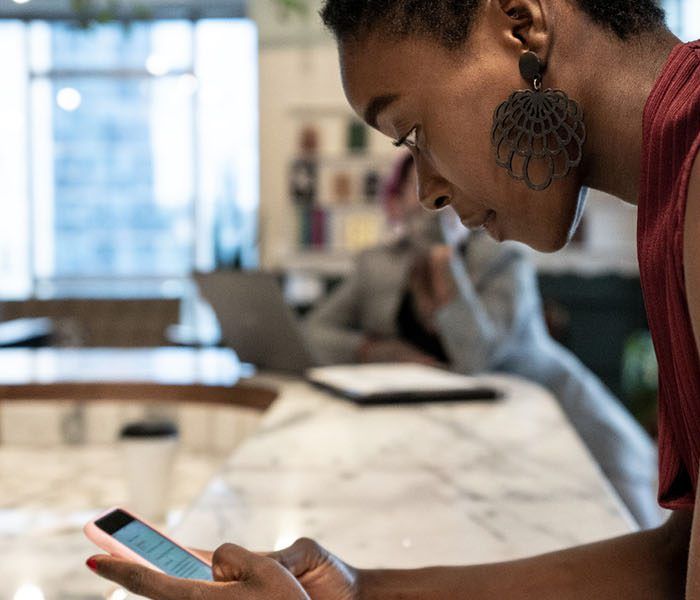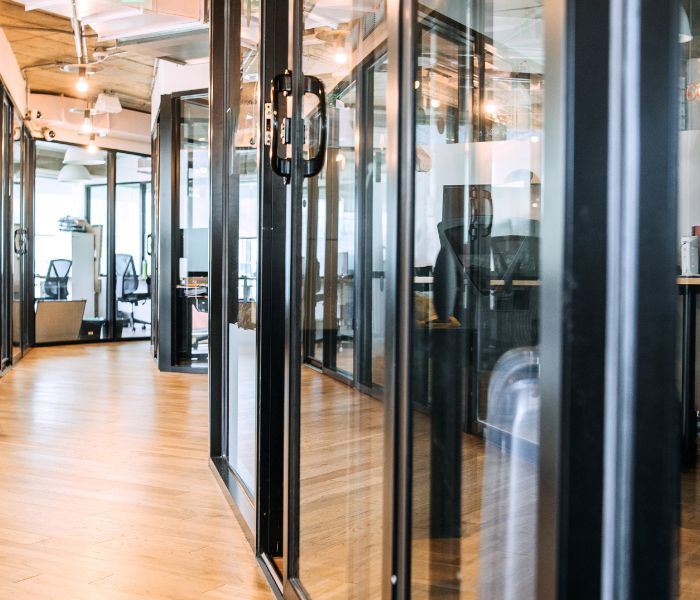You can’t go online these days without seeing multiple posts making it clear that we’re on the verge of re-entry and that the office you return to won’t look like the office you left. Given this, you might be surprised to hear that almost 50% of organizations still haven’t finalized their approach for returning to the workplace. If you’re in that same boat, know that you’re not alone and there are resources to help you weave through this uncharted path.
COVID-19 hit quicker and harder than expected, causing an unprecedented exodus of office workers retreating from their potentially asymptomatic coworkers. With utilization information from 1,400 organizations worldwide, we’ve charted what this looked like over time as businesses reacted to the rapidly evolving coronavirus news. This chart reflects workplace utilization data from over twenty million square feet of corporate and university space across the US, Europe, and Asia. Workplace utilization peaked in 2020 at 60% just days before the World Health Organization declared COVID-19 a global pandemic. After the World Health Organization’s COVID-19 pandemic designation, attendance at workplaces across the globe plummeted and since then has been hovering at about 4%.
With local governments and health associations relaxing their stay at home orders, offices will be gradually opening and more of us will be leaving our kitchen tables, attics, and other makeshift home offices to return to working in the vicinity of our co-workers. The biggest question facing us as restrictions are eased is: how do we safely and efficiently return to the workplace? If you haven’t decided your “how” yet, you are not alone. In a poll of over 200 facility management and real estate professionals, 48% said they have not yet settled on their organization’s approach to re-entry back into the office.
Hoteling Solutions for Workplace Re-Entry
Though an individual organization’s return to office path might be unclear right now, priority work strategy and seating arrangement trends have begun to surface. When asked about workplace re-entry strategies, we’re seeing focus gravitate toward three main options.
- Traditional assigned seating that is socially distanced.
- Hoteling with social distancing.
- Hybrid combination of assigned and hoteling with social distancing.
The most popular choice of our polled audience, with 30% of the vote, is the traditional assigned seating with social distancing. Under a “red team/blue team” model, a select group of employees deemed necessary to be in the office to most effectively accomplish their jobs are assigned to either of the two teams, red or blue. Then on staggered days, one or the other team is in the office and the other team is working from home. In this model, each employee is assigned a specific space that is socially distanced from their other team members and time is scheduled at the end of each day for thorough sanitization of the workplace prior to the other team’s return. The red team may be assigned to Monday and Tuesday while blue team is assigned to Wednesday through Friday. Often there is a small core group of people that are across both teams and in the workplace each day.

Hoteling with social distancing is a more flexible option that makes the workplace available to all employees but with only a select number of socially distanced spaces available for reservation. When all of the reservable spaces are taken, no more employees are able to select a space in the office. We’ve seen a second flavor to this that is a bit more restrictive and may be considered more conservative in the short term. This is where a select group of pre-approved employees based on their role’s need to be in the office as well as their health and the health of their family are pre-approved to come into the workplace. The ability to reserve space is then restricted to only this subset of employees.
The third path is a combination of the other two, assigned seating and reservable spaces. Certain employees are assigned to specific socially distanced spaces and others are provided with the ability to reserve spaces. The red team/blue team concept has popped up here as well, where specific teams are only able to “hotel” spaces on specific days.
As an example of selecting what the right approach for their business and team, a major financial services firm plans to focus their return on a large, specifically identified group of employees who are considered to more effectively work in the office. To best enable this, they’re adopting the “red team/blue team” model with assigned spaces and will be alternating specific floors. On any given day, either the red or blue team will be in the office but on different floors each day. This approach enables the business to maximize the number and efficiency of the affected employees while still optimizing employee health and the ability to sanitize the workplace.
Another firm in the health care industry is considering utilizing badging and WiFi data to visualize and understand how many people show up each day and notify facility teams when congestion exceeds their predetermined limits. Across their multi-building large campus, their ability to look at flow of employees is important in order to make changes to layout in order to better encourage safe distancing.
Whichever of the three workplace and seating models chosen, consistent across all is the need to know who actually showed up each day, where they were during their time in the office and then allowing appropriate time for sanitization of the workspaces after use. Knowing who showed up each day and where they were is important for both social and contact tracing. Once a confirmed infection is known, each coworker that was also in the workplace can be notified and required to self-isolate.
Creating a Faster, More Accurate Sanitization Process
With maintenance budgets already being stretched and people who actually perform the work being in such high demand, sanitization efforts have also been a key part of the discussion. Providing time between each attendance and allowing for proper preparation makes it easier and faster for facility staff to clean and sanitize. For instance, removing all items except for essentials like monitors and keyboards from desks can enable faster sanitization. Also, informing facility teams which desks were truly occupied can enable those teams to focus on specific spaces as well as the common, public areas thereby saving time while still ensuring a safe, clean space.


Clearly, there is a lot to consider as you plan for your organization’s workplace re-entry. Though most organizations haven’t yet finalized exactly how they will return to the workplace, their planning is underway. In the meantime, be sure to think through the options described above and consider what will work best for your organization at re-entry time. But, recognize that you don’t have to pick one and stay with it. Things will change and you should be prepared to modify your plans as the situation evolves.
If your organization is also undecided on your re-entry strategy for employees, download our Safe Space Playbook to start creating your strategy today.












